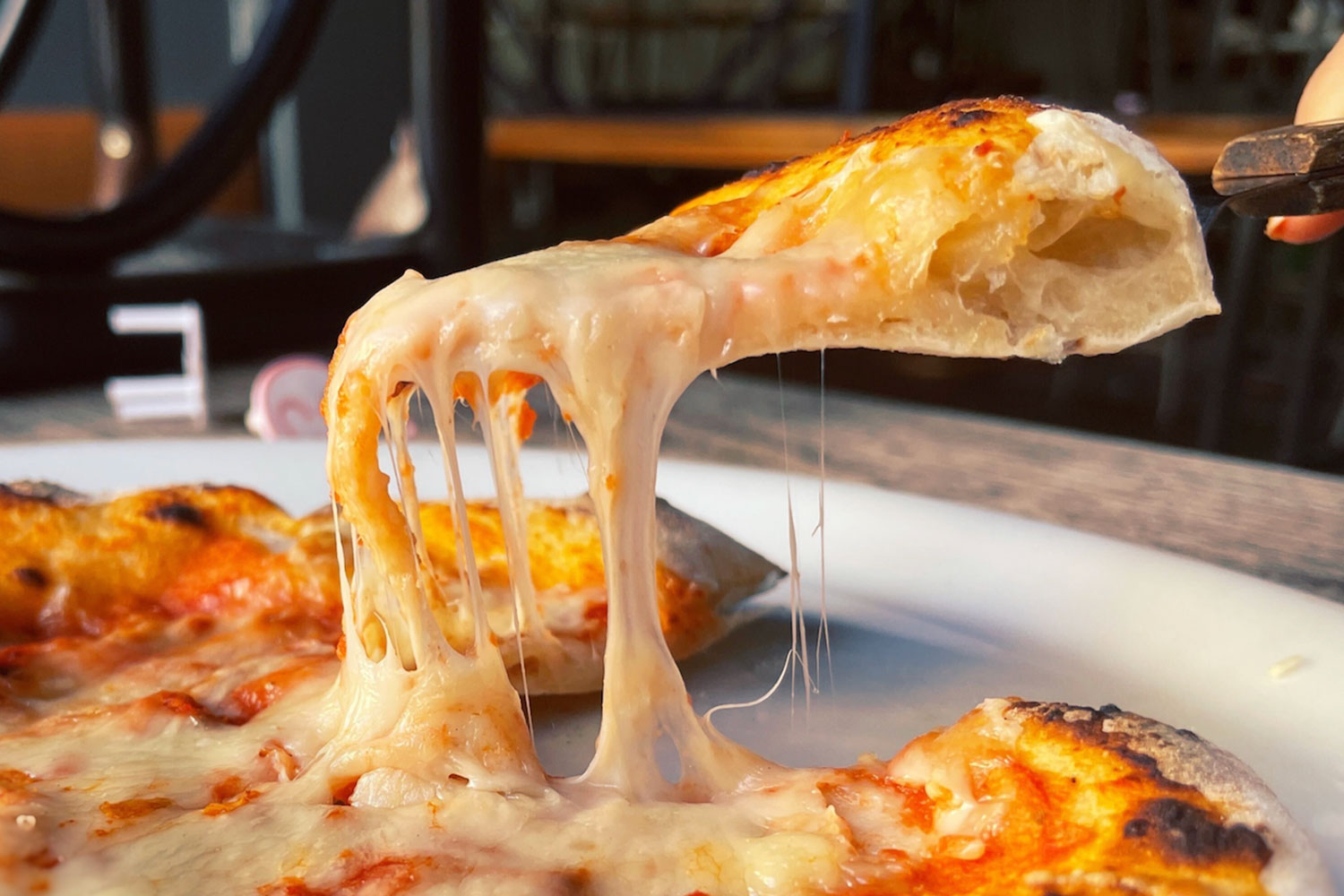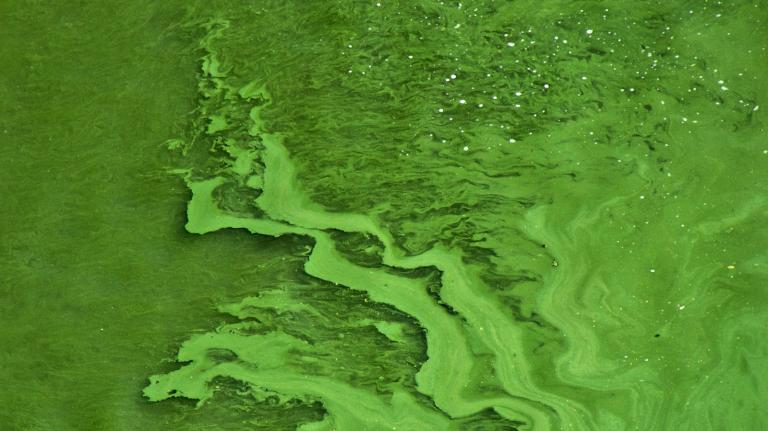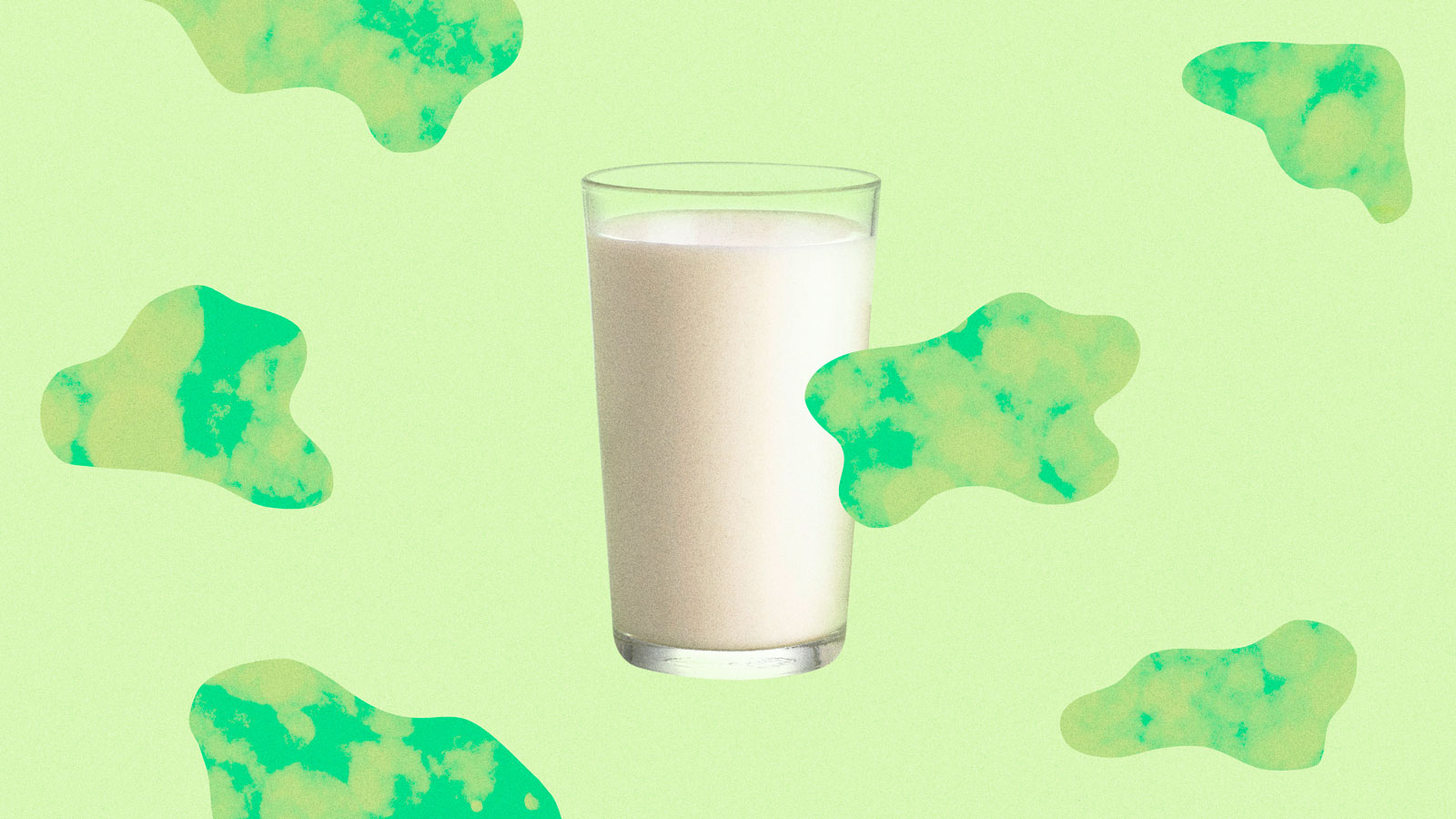As our climate changes, so will our diets. Fix’s Future of Food Issue explores that reality through the lens of foods that show what sustainable, equitable, and resilient eating could look like. Try them yourself with the recipes in our Climate Future Cookbook.
The herd settles under hangar-like roofs, crowding in the shade to escape the 120-degree F heat. Overhead, propeller-sized fans and industrial air coolers roar into action as chilled water circulates through the troughs. Soon, the cattle, as seen in a newsreel, seem none the wiser to the scorching conditions outside — or at least comfortable enough to pump out milk in volumes once possible only in cooler climates.
A desert dairy ranch seems a bit dystopian, a vision of a distant, overheated future. But as more of the world develops a craving for cheese, ice cream, and lattes, cattle farms like this air-conditioned operation in Dubai are appearing in unexpected places.
Globally, the $871 billion dairy industry relies upon some 270 million cows to produce more than 600 million tons of milk annually. All of those bovines consume vast resources — feed, water, land, and, often, hormones and antibiotics — and each one can burp about 220 pounds of methane per year, a greenhouse gas 30 times more potent than carbon dioxide.
Meanwhile, the world’s appetite for dairy is exploding. With the market projected to reach over $1 trillion by 2026, simple economics would dictate the need for many more cows. Although plant-based analogs have never managed to fully capture the taste and texture of the real thing, a new crop of startups say they’ve found a better way to remove cows from the equation — by milking microbes instead of udders.
Using precision fermentation, a process commonly used to produce insulin and vitamins, food technology startups are cultivating microbes to produce milk proteins such as casein and whey. Thriving on just water and carbohydrates, the genetically engineered yeast and fungi pump out the creamy base for dairy products to deliver the same taste, texture, and performance — froth, whip, melt, and all — as their bovine-sourced counterparts. It’s an innovation that could send dairy stampeding toward a more sustainable future. Already, the German startup Formo is looking to replace a tenth of Europe’s conventional supply by 2030.
“It’s a big ask,” says Oscar Zollman-Thomas, a business analyst for the Berlin-based company. “But we’re making milk without cows, so we may as well shoot for the stars.”
* * *
Unraveling the secrets of bovine genetics took a huge leap in 2009, when scientists from the U.S. National Institutes of Health sequenced the genome of a cow from a Montana ranch. Five years later, two bioengineers copied the genetic code for producing whey, a key component of milk that’s responsible for its swirl, into the DNA of yeast, programming the microbes to brew dairy protein instead of alcohol.
They then founded Perfect Day, the world’s first lab-grown dairy company, to launch a new field of moo-less milk products made from precision-fermented whey. The startup’s pilot batch of ice cream proved to be a big hit, with all 3,000 pints selling out within hours. Evolving into the industry’s mother cow of sorts, the Berkeley, California company now supplies alt-dairy whey to producers who use it to craft a wide range of consumables.
“We were flabbergasted by how beautiful this protein was,” Lizanne Falsetto, the founder of Betterland Milk, says with a reverence often reserved for prized cattle.
The company, in Napa, California, uses Perfect Day’s powdered whey to reconstruct milk from its core components: protein, fat, carbohydrates, vitamins, minerals, and water. The lightness of the alt-whey, Falsetto says, makes it highly soluble and stable when suspended. The result is indistinguishable from cow milk — velvety smooth straight up, thick and foamy when frothed into a latte.
Nutritionally, it’s superior. While its protein levels match those of whole milk, Betterland’s formula requires just one-third of the sugar and no cholesterol-laden animal fats. “And unlike plant-based proteins, there’s no off-taste or color,” she adds. The product also has a 12-month shelf life, unrefrigerated. “It acts, looks, and performs better than [cow] milk.”
Dairy produced from microbial proteins is also more efficient, generating less waste and greater yield. Precision fermentation shrivels dairy’s environmental footprint by skipping past the cow straight to the foundation of the end product. Microbes such as yeast and fungi are programmed to brew a specific protein — whey or casein — in a soup of water, sugar, and micronutrients. The genetically engineered microflora are filtered out, and the result is subsequently isolated and dried, then concocted into everything from yogurt and creamy cheese to butter pecan ice cream. Compared to conventional dairy, an independent life cycle analysis commissioned by Perfect Day finds a reduction of 97 percent in carbon emissions, 99 percent in water consumption, and as much as 60 percent in energy.
[Read more: farming algae can be another water-, energy-, and space-saving solution.]
Those benefits are especially striking when making cheese, a process that converts a gallon of milk into just one pound of food while leaving three quarts of whey as a by-product. Cow-to-curd cheese requires more water per pound than beef or lamb, and trails just behind red meat in greenhouse gas emissions and land use.
“From an environmental point of view, cheese is the sore thumb of the dairy industry,” says Matt Gibson, founder of alt-dairy startup New Culture in Emeryville, a city near San Francisco.

New Culture produces precision-fermented casein, the protein that gives cheese its chew, melt, and stretch, to create mozzarella. The average American consumes more than 12 pounds of this beloved pizza topping annually. Introducing a cow-free version “gives us the biggest opportunity to make a meaningful impact on the environment,” says Gibson.
He knows it’ll take a convincing product to win over the market — though the “zero-cholesterol” and “lactose-free” labels may help spur sales. Neutral in taste, conventional mozzarella leans on casein strands to give it texture and mouthfeel, qualities Gibson finds lacking in plant-based versions. Because vegan cheese uses starch and oil emulsions as a proxy, it doesn’t have the same toothy bite and resistance. Real dairy protein from microbes “makes our cheese a delicious experience,” he says — stretching, bubbling, browning and all.
* * *
For the nascent microbial dairy industry — most of these startups plan to launch their offerings in the next year — creating products indistinguishable from their conventional counterparts is by far the biggest priority.
Swaying the market ultimately comes down to taste and price, says Jason Rosenberg, head of business development for Remilk. Unless they’re on par with tried-and-true goods, “you’re really missing the mark on making significant change.”
Confident in its aim, the Israeli startup begins construction later this year on what will be the world’s largest precision fermentation plant. Located in Kalundborg, Denmark, the 750,000-square-foot facility will churn out dairy proteins in volumes equivalent to 50,000 cows per year. (To put this in perspective, Australia’s 4 million-acre Alexandria Farm, one of the world’s largest cattle ranches, counts 55,000 heads.)
Rosenberg hopes the facility will serve as the blueprint for an efficient and vastly expandable system — a hub-like model that leverages a worldwide dairy production and distribution infrastructure to get dairy proteins to consumers as milk products.
CEO Aviv Wolff aims to make Remilk “the largest dairy company in the world.” The bullish and radical vision is imperative, these enterprises maintain, to shake up a gargantuan and untenable system of food production.
To be clear, these startups are all poised to install themselves into a well established industrial food network. Perfect Day and New Culture, for example, have teamed up with agribusiness giant Archer Daniels Midland — a company with a record of falling short on its carbon capture goals — to tap its extensive manufacturing infrastructure. And for the industry at large, the sheer scale of mass production means a heavy reliance on conventional sugar sources such as corn, a crop found to be a major contributor to air pollution.
“You have to be pragmatic in bringing [the technology] to market,” says David Bucca, founder of Change Foods, another alt-cheese company in the San Francisco Bay Area. Successful and timely implementation requires practical choices that include sourcing cheap, abundant commodity inputs. Otherwise, he adds, “the whole thing would fail, and then you’re not displacing anything.”
The U.S. dairy industry has committed to being carbon neutral by 2050, Bucca notes — a tall order that calls for major disruptive technologies. “There’s only so many solar panels you can put on. [Precision fermentation] is a way to actually move the needle,” he says.
The disruption does face some pushback. Genetically engineering a microbe to excrete milk proteins is “the definition of unnatural,” the nonprofit Non-GMO Project states. And the dairy lobby, wary of plant-based and lab-cultured doppelgangers, has pushed to restrict labels such as “milk” strictly to cow-derived products, through measures like the Dairy Pride Act in the U.S. A similar initiative, Amendment 171, was rejected by the European Commission last year.
Alt-dairy advocates call the label debate a distraction. “It feels like the smallest part of the argument that we should be having,” says Formo’s Zollman-Thomas. He points to chymosin, another dairy protein found in rennet, a key ingredient in cheese. Traditionally extracted from the stomachs of calves, most of the world’s supply has long been produced through precision fermentation. “People have been happily eating products made through this technology for much of their lives,” he adds.
Because the proteins are biologically identical to those in cow milk, the alternative category applies to the process more than the product itself. As alt-dairy enters the mainstream, Zollman-Thomas sees that its rise could benefit small-scale farmers and producers. As precision fermentation eases the pressure on factory and commodity farming, he says, they will be able to command premium prices for dairy products made with milk from animals raised humanely and sustainably. Besides, “all of our inspiration comes from those traditional players,” he adds. “To disregard [them] would be a total dereliction of duty.”
* * *
Proponents of alternative dairy argue that, ultimately, the upward trend of global temperatures and population growth will leave us little choice but to embrace new sources of old favorites.
“We have to drastically change the way we produce our food,” says George Monbiot, a British environmental writer and producer of Apocalypse Cow, a documentary that explores the impacts of cattle farming. “Otherwise, we are jiggered.”
Raising animals to feed a growing, protein-hungry world, he says, is no longer sustainable. Yes, animals are vital to the livelihoods of smallholder farmers, Monbiot concedes. Many are in rural, developing regions of the world, largely in the Global South, where marginal land often limits farming options. But as industrial grazing and agriculture mushroom, their effects on climate change will disproportionately impact those areas, he says, putting that very population at greater risk of extreme temperatures, drought, and weather.
The world needs a large-scale, top-level intervention, Monbiot states, and few solutions rival the efficiency of a microbe in nutrient conversion. Even soybeans, among the highest sources of plant protein, require 1,700 times more land to net yields equal to precision fermentation, research shows. With the technology, “you don’t need fertile land, you don’t need a lot of water. You can do it anywhere,” he says, using a wide range of inputs and energy sources.
Monbiot envisions a largely decentralized system, one that unshackles communities from heavy global supply chains and import dependency. “In my ideal world, every town would have its own brewery producing precision products to meet local tastes and needs,” he says.
The appeal of microbrewed milk and cheese aside, it’s a vision of a world that will need far fewer cows, and in which the remaining ones will have a lot more room to roam — hopefully without air-conditioning.
Read more about the future of food:
- The Indigenous tribe reviving native camas and the prairies that sustain it
- At an urban farm, a community connects to their food and to each other
- Pets eat a lot of meat. Feeding them insects could lower their carbon pawprint.




